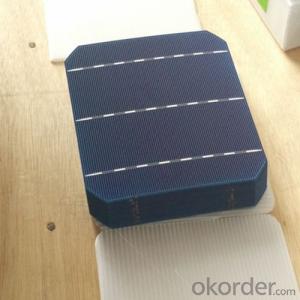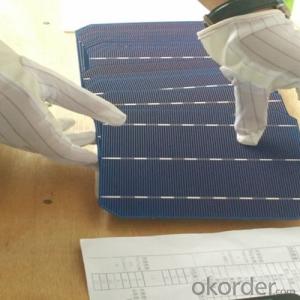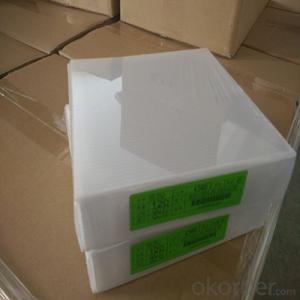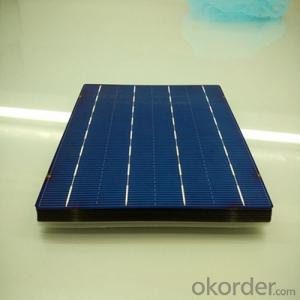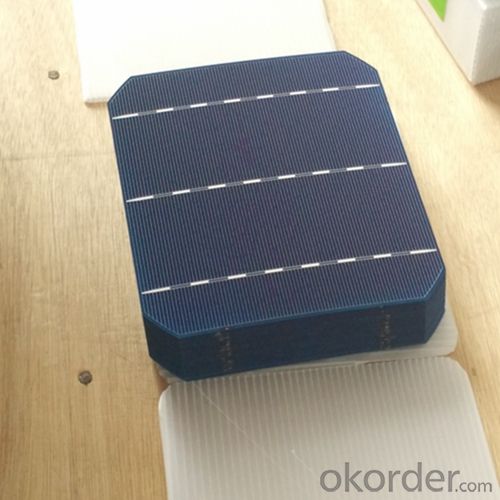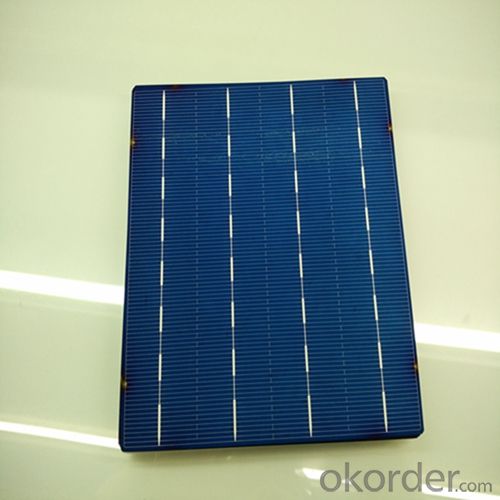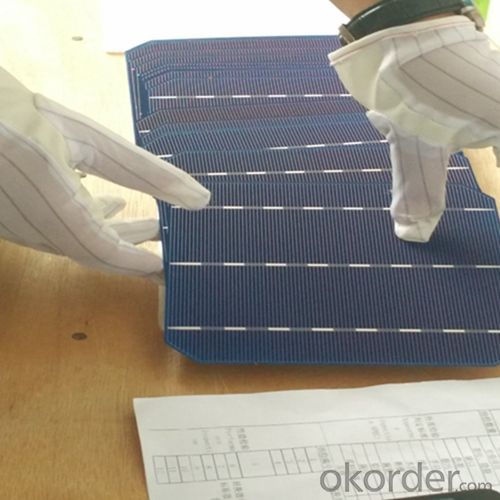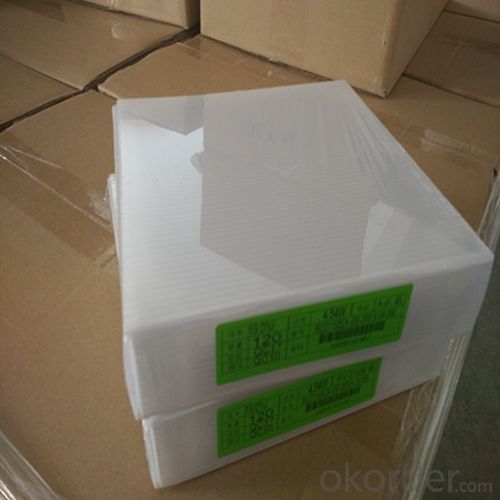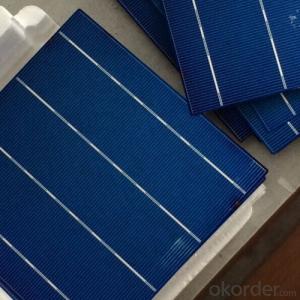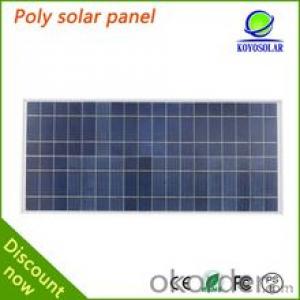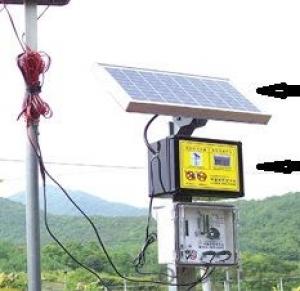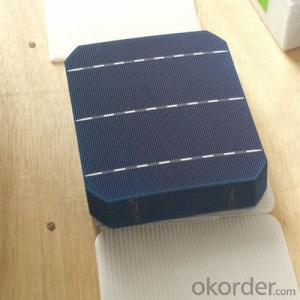Chinese Solar Cells - Poly 156x156mm2 Grade 1 Solar Cells
- Loading Port:
- Shanghai
- Payment Terms:
- TT OR LC
- Min Order Qty:
- 6000 watt
- Supply Capability:
- 6000000 watt/month
OKorder Service Pledge
OKorder Financial Service
You Might Also Like
The operation of a photovoltaic (PV) cell requires 3 basic attributes:
The absorption of light, generating either electron-hole pairs or excitons.
The separation of charge carriers of opposite types.
The separate extraction of those carriers to an external circuit.
In contrast, a solar thermal collector supplies heat by absorbing sunlight, for the purpose of either direct heating or indirect electrical power generation from heat. A "photoelectrolytic cell" (photoelectrochemical cell), on the other hand, refers either to a type of photovoltaic cell (like that developed by Edmond Becquerel and modern dye-sensitized solar cells), or to a device that splits water directly into hydrogen and oxygen using only solar illumination.Characteristic of Mono 156X156MM2 Solar Cells
You are gaining energy independence - add battery backup power for even greater energy security
The cost of electricity is only going to rise – insure against that rising cost
Adaptive cells change their absorption/reflection characteristics depending to respond to environmental conditions. An adaptive material responds to the intensity and angle of incident light. At the part of the cell where the light is most intense, the cell surface changes from reflective to adaptive, allowing the light to penetrate the cell. The other parts of the cell remain reflective increasing the retention of the absorbed light within the cell.[67]
In 2014 a system that combined an adaptive surface with a glass substrate that redirect the absorbed to a light absorber on the edges of the sheet. The system also included an array of fixed lenses/mirrors to concentrate light onto the adaptive surface. As the day continues, the concentrated light moves along the surface of the cell. That surface switches from reflective to adaptive when the light is most concentrated and back to reflective after the light moves along
Mechanical data and design
Format | 156mm x 156mm±0.5mm |
Thickness | 210μm±40μm |
Front(-) | 1.5mm bus bar (silver),blue anti-reflection coating (silicon nitride) |
Back (+) | 2.5mm wide soldering pads (sliver) back surface field (aluminium) |
Temperature Coefficient of Cells
Voc. Temp.coef.%/K | -0.35% |
Isc. Temp.coef .%/K | +0.024%/K |
Pm.Temp.coef. %/K | -0.47%/K |
Electrical Characteristic
Effiency(%) | Pmpp(W) | Umpp(V) | Impp(A) | Uoc(V) | Isc(A) | FF(%) |
18.35 | 4.384 | 0.526 | 8.333 | 0.63 | 8.877 | 78.39% |
18.20 | 4.349 | 0.526 | 8.263 | 0.63 | 8.789 | 78.54% |
18.05 | 4.313 | 0.525 | 8.216 | 0.63 | 8.741 | 78.32% |
17.90 | 4.277 | 0.524 | 8.161 | 0.625 | 8.713 | 78.04% |
17.75 | 4.241 | 0.523 | 8.116 | 0.625 | 8.678 | 77.70% |
17.60 | 4.206 | 0.521 | 8.073 | 0.625 | 8.657 | 77.36% |
17.45 | 4.170 | 0.519 | 8.039 | 0.625 | 8.633 | 76.92% |
17.30 | 4.134 | 0.517 | 8.004 | 0.625 | 8.622 | 76.59% |
17.15 | 4.096 | 0.516 | 7.938 | 0.625 | 8.537 | 76.80% |
17.00 | 4.062 | 0.512 | 7.933 | 0.625 | 8.531 | 76.18% |
16.75 | 4.002 | 0.511 | 7.828 | 0.625 | 8.499 | 75.34% |
16.50 | 3.940 | 0.510 | 7.731 | 0.625 | 8.484 | 74.36% |
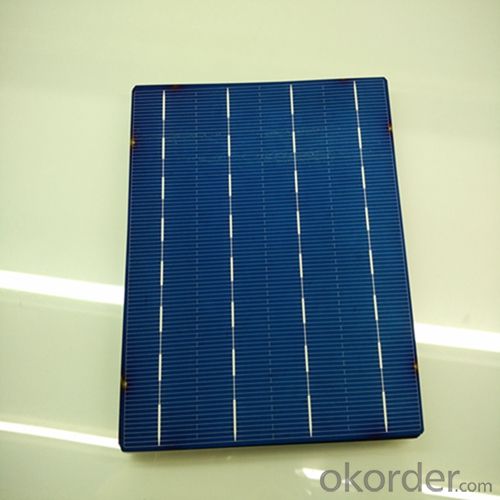
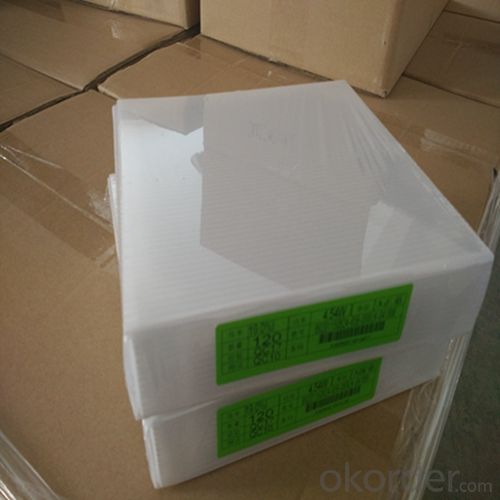
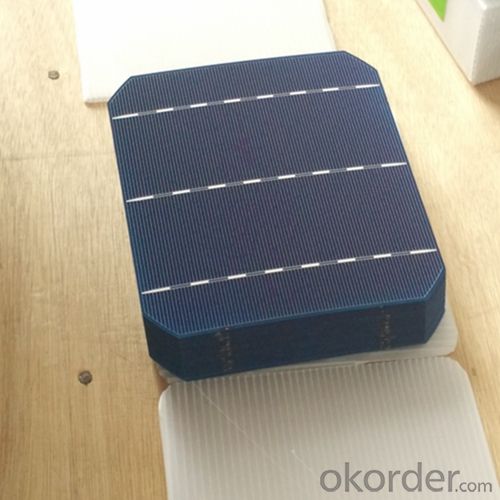
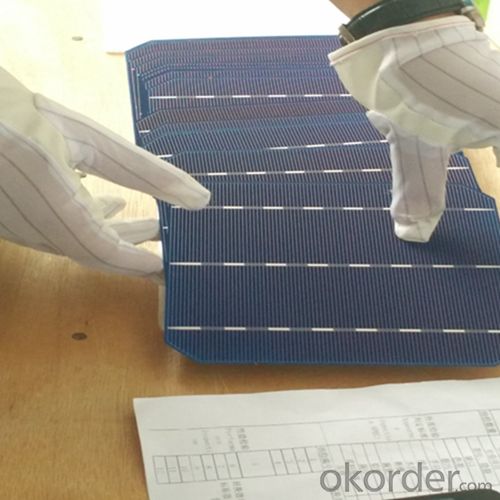
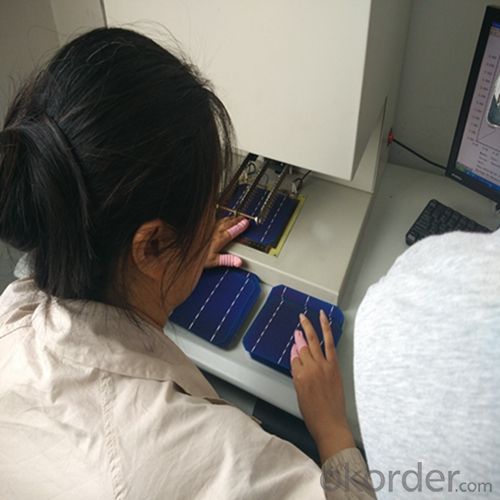 FAQ
FAQ
Q: What price for each watt?
A: It depends on the quantity, delivery date and payment terms, generally Large Quantity and Low Price
Q: What is your size for each module? Can you tell me the Parameter of your module?
A: We have different series of panels in different output, both c-Si and a-Si. Please take the specification sheet for your reference.
Q: What is your size for each module? Can you tell me the Parameter of your module?
A: We have different series of panels in different output, both c-Si and a-Si. Please take the specification sheet for your reference.
- Q: Can solar cells be used in agriculture for irrigation?
- Yes, solar cells can be used in agriculture for irrigation. Solar-powered water pumps can be used to draw water from wells or other sources, providing a reliable and sustainable solution for irrigation. This helps farmers reduce their dependence on traditional energy sources and decrease operational costs, making solar cells a viable option for agricultural irrigation.
- Q: Can solar cells be used for powering remote sensors?
- Yes, solar cells can be used for powering remote sensors. Solar cells convert sunlight into electricity, making them an ideal power source for remote sensors in locations where access to a power grid is limited or non-existent. This enables continuous operation of the sensors without the need for frequent battery replacements, making solar cells an efficient and sustainable solution for powering remote sensors.
- Q: How do solar cells handle high winds or hurricanes?
- Solar cells are designed to withstand high winds or hurricanes by being securely mounted to structures or rooftops. Additionally, they are built to be durable and have undergone rigorous testing to ensure that they can withstand extreme weather conditions.
- Q: Can solar cells be used for powering oil rigs?
- Yes, solar cells can be used for powering oil rigs. Solar panels can harness sunlight to generate electricity, which can be utilized to power various equipment and systems on oil rigs, reducing reliance on traditional fossil fuel-based generators and minimizing environmental impact. However, the feasibility and effectiveness of implementing solar power on oil rigs depend on factors such as energy requirements, geographic location, available space, and cost considerations.
- Q: What is a solar cell?
- A solar cell, also known as a photovoltaic cell, is a device that converts sunlight directly into electricity. It is made up of semiconductor materials that absorb photons from sunlight, creating an electric current. Solar cells are used in solar panels to generate renewable energy for various applications, such as powering homes and businesses.
- Q: What is the impact of solar cells on reducing water usage?
- Solar cells have a positive impact on reducing water usage as they generate electricity without requiring water for cooling, unlike traditional power plants. This helps conserve water resources and reduces the strain on water supplies, particularly in regions facing water scarcity.
- Q: How are solar cells integrated into building designs?
- Solar cells can be integrated into building designs in several ways. One common method is to install solar panels or modules on the roof, which capture sunlight and convert it into electricity. These panels can be mounted on top of the roof or integrated into the roofing material itself. Another approach is to incorporate solar cells into windows or building facades, creating solar glazing that generates electricity while still allowing natural light to enter the building. Additionally, solar cells can be integrated into shading devices such as awnings or louvers, providing both energy generation and sun control. Overall, integrating solar cells into building designs allows for the efficient utilization of renewable energy and reduces dependency on traditional power sources.
- Q: Can solar cells be used in sports arenas?
- Yes, solar cells can be used in sports arenas. They can be installed on the roofs or facades of the arenas to harness solar energy and generate electricity. This renewable energy source can help to power the stadium's lighting, scoreboards, and other electrical systems, reducing the reliance on non-renewable energy sources and lowering the carbon footprint of the facility.
- Q: Can solar cells be used in off-grid cabins or cottages?
- Yes, solar cells can definitely be used in off-grid cabins or cottages. Solar energy systems are a highly suitable and popular choice for powering these types of remote, off-grid locations. Solar cells, also known as photovoltaic (PV) panels, can convert sunlight into electricity, which can then be used to power various appliances, lighting, heating systems, and other electrical needs in off-grid cabins or cottages. They offer a sustainable and environmentally friendly solution, reducing reliance on traditional power sources and providing a reliable source of clean energy in remote locations.
- Q: Can solar cells be used in remote areas without access to the grid?
- Yes, solar cells can be used in remote areas without access to the grid. Solar cells, also known as photovoltaic cells, generate electricity from sunlight. They can be installed in remote areas to harness the sun's energy and provide power for various applications such as lighting, water pumping, and charging electronic devices. Solar cells are particularly suitable for off-grid locations as they operate independently of the traditional electric grid, making them a reliable and sustainable solution for remote areas.
Send your message to us
Chinese Solar Cells - Poly 156x156mm2 Grade 1 Solar Cells
- Loading Port:
- Shanghai
- Payment Terms:
- TT OR LC
- Min Order Qty:
- 6000 watt
- Supply Capability:
- 6000000 watt/month
OKorder Service Pledge
OKorder Financial Service
Similar products
Hot products
Hot Searches
Related keywords
